
|
Pages: << Back 1 2 3 4 5 6 7 8 9 10 Next >> The
beginning of Humbert's presidency coincided with the establishment
of a student military training program, the third such to be organized
on the DePauw campus. United States military intervention in Korea
under United Nations auspices in the summer of 1950 raised the specter
of severely reduced enrollments as a result of male students being
drafted into the Armed Forces. The administration, with strong faculty
and student support, approached the federal government concerning
the possibility of introducing some kind of military training program.
In July 1951 the Defense Department responded by instituting a unit
of the Air Force Reserve Officers' Training Corps at DePauw.
A
major accomplishment of the Humbert administration was the organization
of the School of Nursing in 1955. The university entered into an
agreement with Methodist Hospital in Indianapolis for a cooperative
program in nursing education that included two years of pre-nursing
classes at DePauw and two years of professional and clinical training
at Methodist Hospital. Graduates would receive the degree of bachelor
of science in nursing from DePauw University and become eligible
to take the licensing
examination to qualify as registered nurses. Fredericka E. Koch
of Methodist Hospital became the school's first director and was
succeeded in 1957 by Catherine M. Friddle. Eight young women entered
the program in the fall of 1955 and five graduated four years later.
By 1961 enrollments had grown into double digits.
In 1955 a faculty self-study committee funded by the Ford Foundation
for the Advancement of Education issued a report containing 56 specific
recommendations for improving DePauw's academic program. Strongly
supporting the university's commitment to the liberal arts, the
committee endorsed the general studies courses that had emerged
from the Experimental Program of a few years before and urged expansion
of the honors program and comprehensive examinations for all graduating
seniors. The report also suggested that the student body be expanded
to 2000 and eventually 2500, and that faculty teaching loads be
limited to 12 hours per week with a maximum of 100 students. These
ideas all helped shape the future direction of DePauw.
_________________________________
Educational
foundations contributed significantly to university programs in
this period. Grants from the Danforth Foundation and the Lilly Endowment
made possible a pilot study for the expansion of the honors program
and curricular studies in various departments which led to the introduction
of such courses as Basic Beliefs of Modern Man and History of World
Civilizations. The Cold War in the 1950s also inspired the addition
to the curriculum of courses in Russian and Asian history and government.
In 1958 the university began offering courses in the Russian language
for the first time, leading eventually to the evolution of the department
of German language and literature into the German and Russian department,
with majors available in both languages.
|
Depauw University e-history | E-mail comments to: archives@depauw.edu
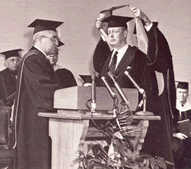
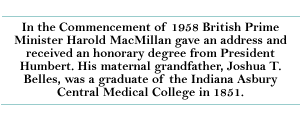

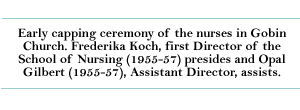
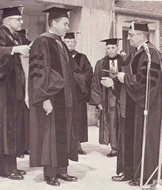
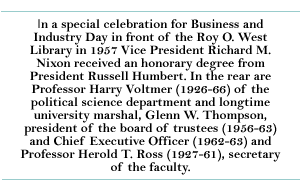

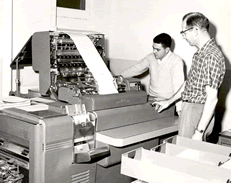
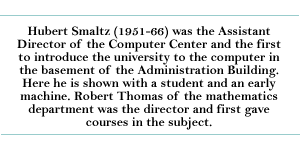
 __________________________________
__________________________________